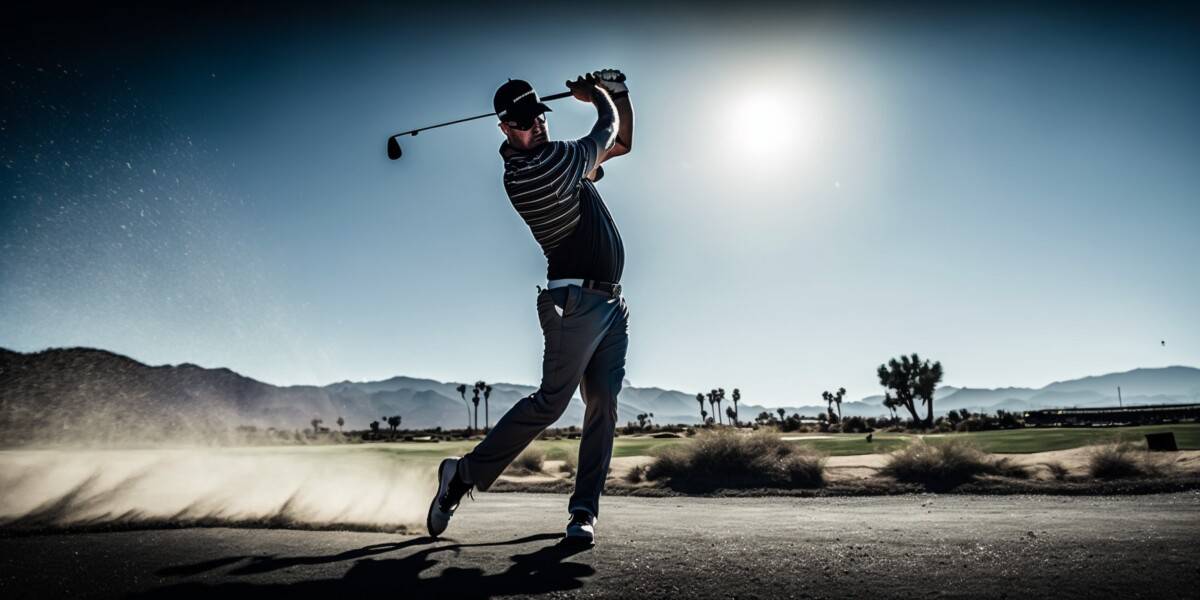
There’s a lot of debate around how much forearm rotation is ideal in a golf swing. Some people say that you should keep your arms and hands straight and only use your shoulders to turn, while others claim that you need to rotate your forearms to generate more power.
So which is it? Should you keep your arms and hands straight or rotate your forearms? And if you need to rotate your forearms, how much is ideal? In this post, I’ll explore the pros and cons of rotating your forearms in the golf swing and offer my thoughts on the best way to do it.
What Is Forearm Rotation?
Forearm rotation is the amount your right and left arm rotate during your back and downswing. This is an important aspect of your swing, as it can determine how well you make contact with the ball. You can hit the ball further and more accurately if you have a good left forearm rotation.
If you don’t rotate your clubhead, it will stay square to the golf ball throughout the arm backswing, inhibiting your ability to clear the club on the downswing for maximum speed.
If you want to improve your golf game, one of the best things you can do is invest in a good golf club membership. This will give you access to all the facilities and amenities needed to play your best game. Remember, keep your forearm and left wrist rotated when practicing your swing. This will help ensure that you hit the ball in the sweet spot every time.
Forearm rotation is an important element of the golf swing because it allows players to feel restricted with the golf club. This feeling of restriction gives the player a sense of control over their swing and, ultimately, the game.
How Can You Tell If Am Not Rotating My Forearms?
Forearm rotation is one of the most important aspects of a good golf swing. If your arms don’t rotate properly, it can lead to problems, from hooks and slices to loss of power. Left Forearm counterclockwise is essential for maintaining control of the clubface throughout your swing and ensuring that you hit the ball with maximum power.
If you find yourself struggling to keep your grip on the club, likely, you need to rotate your forearms properly. This can also lead to your wrists breaking down during your swing, which can cause all sorts of issues with your ball striking. If you notice any of these problems, take a lesson from a golf pro and work on correcting your forearm rotation.
First, look at your grip; if your hands are turned too far inward (toward the center of your body), you likely need to rotate your forearms more. This will result in an incorrect and inefficient swing.
Second, pay attention to your right elbow position at the top of the swing. If your elbows are too close to your body, it’s another sign that you need to increase forearm rotation. Increasing the forearm rotation can create more space between your body and the golf club. This will help you create a more powerful and consistent swing.
Finally, it is important to pay attention to the clubface. If the clubface points too far left (for right-handed golfers) or right (for left-handed golfers), you must rotate your forearm properly.
You can ensure you get the most out of your golf swing by watching these key signs.
How Do I Produce Forearm Rotation?
Forearm rotation is one of the most important components of a successful golf swing. This simple movement can help you generate more power and accuracy in your shots. By rotating your forearms as you swing, you can create a more powerful and controlled swing that will help you improve your game.
This helps to create the necessary centrifugal force by propelling the ball a long distance.
While many golfers focus on wrist hinging to create this force, forearm rotation is the key to generating maximum power. By focusing on rotating your forearms, you can create a much more powerful swing that will send the ball flying further than ever before. So next time you’re on the golf course, focus on rotating your forearms for a more powerful swing.
This can be accomplished by using a grip that promotes a natural revolving motion of the forearm, such as an interlocking or baseball grip. Gripping the club can generate more clubhead speed and further hit the ball.
In addition to keeping the elbows close to the body, it is also important to use the forearm muscles to their full potential during the swing. This will help ensure you can hit the ball as far as possible.
With practice and time, golfers can perfect their forearm rotation. This, in turn, will allow them to hit the ball with more power and accuracy than they ever have before.
Do Forearms Rotate In A Downswing?
As any golf enthusiast knows, a smooth and powerful swing is essential for a successful shot. One key element of a good swing is forearm rotation. Turning your forearm as you swing can generate more power and accuracy. Forearm rotation also allows you to control the direction of your shot.
This occurs when the forearms cross rotate around the club, giving the clubhead more speed and power as it strikes the ball. The extra speed and power come from the extra rotational force applied to the club head.
However, some golfers debate whether forearm rotation should occur during the downswing. Forearm rotation can help produce power in the shot but can also cause hooks or slices if not done correctly. Golfers must decide for themselves whether they want to rotate their forearms during the downswing.
There is a common misconception that forearm rotation can cause the club to come over the top of the ball, resulting in a slice. However, this is not necessarily the case. Forearm rotation can help square the club face vertically to the impact, preventing a slice.
Some believe you must rotate your forearm to generate enough power to hit the ball properly. They think that if you don’t rotate your forearm, you won’t be able to hit the ball with enough force.
It is ultimately up to each golfer to experiment with different techniques and find what works best. Different golfers will have different preferences when it comes to techniques, so it is important for each golfer to experiment until they find a technique that works best for them.
However, forearm rotation can be a helpful tool for generating extra power and increasing accuracy. By rotating your right forearm, you can generate additional power to help improve your accuracy.
Conclusion
In conclusion, forearm rotation is an important part of the golf swing. It helps you generate power and increase accuracy. However, it is also important to ensure you do not over-rotate your forearm, as this can lead to mistakes.
Using these tips, you can start incorporating forearm rotation into your swing and improve your game. Do you have any questions about using forearm rotation in your golf swing? Let us know in the comments below!
🖐 We want to hear from you! Let us know your comments below ⬇️

ABOUT THE AUTHOR
Jim has been an avid golfer and golf fan for over 40 years. He started a YouTube channel called Golf Plus about a year ago and it has been wildly successful. It only made sense to expand and reach more golfers with this site and social media. You can learn more about Jim and Golf Plus Media Group by visiting our About Page.







Comments (2)
Golf Exercises At Home (2023) | Golf Plus Newssays:
April 2, 2023 at 7:19 am[…] they can be done from a seated position, Seated Rotations are a top choice among golfing best exercises for improving rotational mobility. An essential part of your swing that needs work if you want to go faster. Get […]
Secret Pre Shot Routines of Pro Golferssays:
May 10, 2023 at 9:21 am[…] own personalized routine, you’ll set yourself up for success on the golf course. Remember, golf is a game of small improvements that add up over time, so stick with it and enjoy the […]